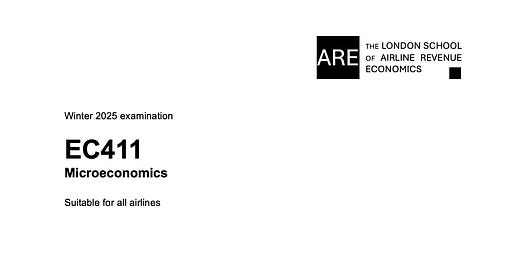Airlines are forgetting to look for corner solutions
Three tales of how airlines find or do not find inspiration in that which is not obvious
The step-up to graduate economics from a bachelor’s degree can be a big jump. The first few lectures hit hard.
At undergraduate level consumers in an economic model decide to buy two products. Flights and hotels for example. Firms like airlines choose to buy two products too, spending money on both planes and fuel.
Keep reading with a 7-day free trial
Subscribe to Airline Revenue Economics to keep reading this post and get 7 days of free access to the full post archives.



